Advantages of Artificial Intelligence in Dentistry
Artificial Intelligence and Dentistry
As in the health sector, artificial intelligence has had a great impact in the field of dentistry. With the use of artificial intelligence such as CranioCatch, which has been developed in recent years, the treatment and diagnostic processes in dentistry have been greatly improved, along with the emergence of innovative dental AI software and dental aid apps. Additionally, technologies like dental ai rpd are becoming increasingly relevant.
Artificial intelligence has made a significant impact in the field of dentistry. It can be used to improve clinical practice by providing support to dentists in diagnosis, treatment planning, follow-up of patients, and many other areas.
Artificial intelligence, including dental AI software and dental aid apps, can assist dentists in making a diagnosis. Using advanced image processing techniques, it can analyze dental x-rays and images and detect potential dental problems. For example, artificial intelligence algorithms can be used to identify caries, gum disease, or structural problems in teeth. This is an important step for early diagnosis and treatment.
Artificial intelligence, particularly dental AI software and dental aid apps, can also assist in treatment planning. Dentists can create three-dimensional (3D) models of their patients' teeth and jaws using artificial intelligence systems. These models can be used to plan complex procedures such as implant surgery or orthodontic treatment. AI systems can assist in the accurate placement of implants or dental prostheses and help predict treatment outcomes.
Follow-up of patients and evaluation of treatment results can also be improved with artificial intelligence, including dental AI software and dental aid apps. Dental health data of patients can be collected in electronic records and evaluated with artificial intelligence analytics. In this way, dentists can better monitor patients' dental hygiene, gingival health, and other dental problems and optimize the treatment process.
Another potential use of artificial intelligence, including dental AI software and dental aid apps, is research in dentistry. AI algorithms can help dentists analyze large data sets and evaluate results, contributing to the development of new treatment methods and improving dental practice. The generation of comprehensive dental AI reports based on this analysis can further aid in understanding trends and making informed decisions.
However, the use of artificial intelligence technology, including dental AI software and dental aid apps, in dentistry is still under development. Dentists' clinical experience and expertise, when combined with the information provided by artificial intelligence systems, are essential for achieving the best results. In addition, ethical and confidentiality issues should be taken into account, and the security of patients' data should be ensured.
As a result, artificial intelligence, including dental AI software and dental aid apps, has great potential in the field of dentistry in diagnosis, treatment planning, patient follow-up, and research. This technology can enable dentists to more accurately diagnose and plan treatment while improving patient care and outcomes. As the use of artificial intelligence in the field of dentistry advances, more innovations and developments in this field are expected.
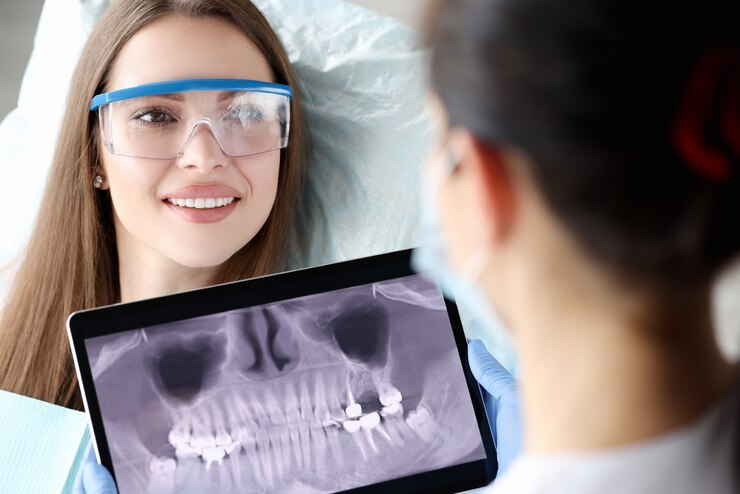
The Role of AI in Preventive Dentistry
Artificial intelligence in dentistry is revolutionizing preventive care by enabling early detection of potential issues. The use of artificial intelligence in dental clinics helps identify risks before they become major problems, particularly through dental imaging. AI technology allows for precise analysis of dental X-rays and images, offering insights that might otherwise be missed by the human eye. This is particularly valuable in ai dental clinic settings, where the integration of AI ensures more thorough and efficient examinations. Additionally, the ability of AI to process vast amounts of patient data quickly enhances the overall patient experience. Technology in dental clinics is transforming the way dentists approach preventative care, allowing for more proactive measures and minimizing the risk of future complications. With AI dental solutions, dentists can analyze patient data more effectively to design personalized prevention strategies, ensuring that each patient’s unique needs are met. This not only improves patient outcomes but also reduces the long-term costs associated with more extensive treatments down the line.
Early Detection of Dental Diseases with AI
In modern dentistry, applications of artificial intelligence in dental clinics play a critical role in diagnosing diseases at their early stages. With AI in dentistry systems analyzing X-rays and dental images, diseases like cavities or periodontal issues are detected much earlier than through traditional methods, reducing the need for invasive treatments. By incorporating technology in dental clinics, these AI systems provide dentists with unparalleled accuracy in interpreting diagnostic data. This is especially important in an ai dental clinic environment, where early intervention can significantly reduce the progression of diseases. Moreover, how AI is used in dental clinics extends beyond just detection; it enables a comprehensive approach to patient care by facilitating personalized treatment plans based on precise and real-time data. This proactive use of AI contributes to overall better health outcomes and helps maintain long-term oral health, while also reducing the chances of patients needing more complex dental procedures in the future.
Artificial Intelligence in Dentistry Education
Artificial intelligence in dentistry education is a technology that has made great progress in recent years. Artificial intelligence can be used in dentistry applications in various ways and can support the educational process of students. Here are some benefits of artificial intelligence in dentistry education:
1. Improving diagnostic skills: AI can help students improve their ability to make accurate diagnoses by analysing dental X-rays, images and patient data. Through AI systems, students can practice and improve their diagnostic skills by analysing real cases.
2. Treatment planning and surgical simulations: Artificial intelligence can help students in treatment planning and surgical simulations. Using AI-based systems, students can explore different scenarios, optimise treatment plans and perform surgical procedures virtually. This allows students to better understand the situations they may encounter in real cases.
3. Student assessment: Artificial intelligence can help assess student performance. AI systems can monitor and evaluate students' dental skills through simulations or virtual patients. This can help students identify their strengths and areas for improvement.
4. Providing continuous feedback to students: Artificial intelligence can offer continuous feedback to students. When working on simulations or virtual cases, learners can get instant feedback from AI systems. This can help students correct their mistakes and improve their skills quickly.
5. Contributing to dental research: AI can help in analysing data used in dental research. Thanks to its ability to detect trends, patterns and relationships by processing large datasets, AI can offer researchers valuable insights and lead to new discoveries.
These benefits show that AI has a potentially huge impact on dental education. However, an important point to remember is that human teachers and real-world clinical experience are still crucial to complete dental education. AI can be used as a tool to support and enhance students' skills, but other elements such as personal guidance and clinical experience should not be ignored.
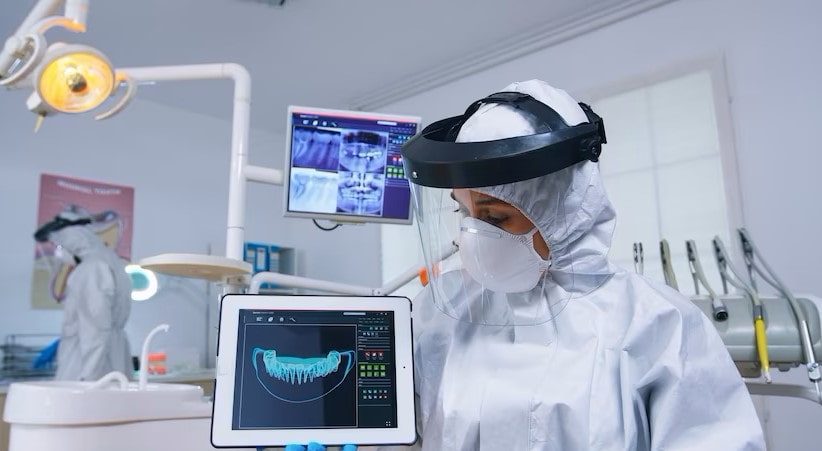
Artificial Intelligence Applications in Dentistry
Artificial intelligence applications in dentistry are a set of technologies and algorithms used to improve treatment processes, diagnosis and patient care. Here are some AI applications used in dentistry:
1. Automated diagnosis: AI can identify various dental problems by analyzing medical imaging techniques such as dental X-rays and images. For example, it can automatically detect conditions such as tooth decay, periodontal disease or dental anomalies. This can help dentists make a faster and more accurate diagnosis.
2. Treatment planning: AI can help dentists create and optimize treatment plans. By analyzing the patient's oral structure and teeth, algorithms can be used to recommend the most appropriate treatment plan. This can make the treatment process more effective and provide patients with better outcomes.
3. Robotic surgery: Artificial intelligence makes it possible to use robotic surgical systems in dentistry. Robots can help dentists with their ability to perform precise operations. For example, implant placement operations can be performed more accurately and safely using robots.
4. Disease prediction and risk assessment: AI can assess patients' dental health risks and predict potential problems. For example, it can analyze clinical data and information including disease susceptibility to determine a patient's risk of periodontal disease. In this way, dentists can more proactively take care of their patients and take preventive measures.
5. Patient tracking and personalized treatment: AI can be used to track and optimize patients' treatment processes. AI-supported systems can be developed for issues such as treatment adherence, appointment tracking and personalization of the treatment plan. This can increase patient satisfaction and improve treatment outcomes.
Artificial intelligence offers many potential benefits in dental practice. However, the importance of human skill and expertise should not be forgotten. AI should be seen as a tool to assist dentists and the role of physicians in clinical assessment and decision-making is still critical.
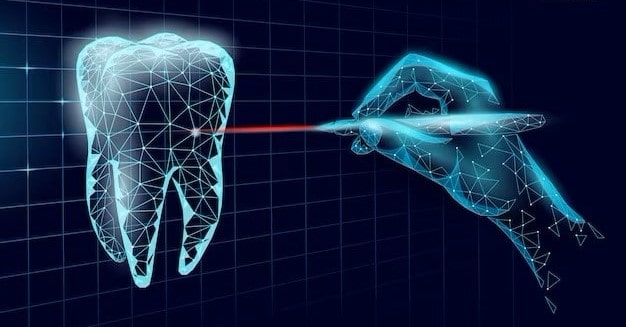
1. Artificial Intelligence in Oral and maxillofacial Radiology
Oral and Maxillofacial Radiology is a medical specialty that uses radiological imaging techniques to diagnose and treat diseases of the mouth, teeth and jaw area. Traditionally, radiologists analyze these images and play an important role in the diagnostic process. However, with the development of artificial intelligence technology, the use of artificial intelligence in the field of Oral and Maxillofacial Radiology is increasing.
Using techniques such as deep learning and image recognition, AI can analyze large amounts of data and develop learning models to detect potential abnormalities in radiology images. This can speed up the diagnostic process, improve accuracy and provide better guidance to healthcare professionals.
In Oral, Dental and Maxillofacial Radiology, AI can be used to detect dental caries, periodontal diseases, cysts, tumors and other abnormalities in images. It can also be used in implant planning, bone density analysis and evaluation of treatment outcomes.
However, the use of artificial intelligence in the field of Oral, Dental and Maxillofacial Radiology is still under development. It is important that AI models are adequately trained and validated to ensure accurate diagnoses. Furthermore, it is generally a more preferable approach to use AI as a tool to assist radiologists rather than replacing their role completely.
AI applications in the field of Oral and Maxillofacial Radiology offer a range of benefits. Here are some examples:
Radiological image analysis: AI can be used to analyze radiological images such as dental X-rays, panoramic images and computed tomography (CT) scans. Thanks to advanced algorithms, AI systems can detect caries, tooth root lesions, cysts, tumors and other pathological conditions. This can be an important tool for early diagnosis and treatment.
Auto-segmentation: AI can be used to automatically identify and classify anatomical structures in radiological images. For example, AI algorithms can automatically segment teeth, bone structure and other soft tissues. This can speed up the diagnostic process and save radiologists time.
Pathology identification and tracking: AI can be used to identify and track pathological conditions. For example, AI algorithms can be used to detect pathologies such as jaw cysts or tooth root resorption. Furthermore, AI systems can be used to monitor the magnitude or progression of pathology during the treatment process.
Treatment planning: AI can assist in treatment planning for procedures such as implant surgery or orthodontic treatment. By analyzing 3D X-ray images and other data, AI systems can determine the correct implant positions, optimize surgical planning and make recommendations for orthodontic treatment.
Data analysis and research: by using AI to analyze large data sets, it can aid new discoveries in dental research. For example, AI algorithms can analyze the prevalence of dental diseases in various populations or evaluate treatment outcomes. This data can help dentists develop better treatment strategies.
2. Periodontology
Periodontology is a branch of dentistry that studies gum disease and the tissues that support the teeth. It deals with conditions such as gingivitis, periodontitis, gum recession and tooth loss. Periodontologists work on diagnosis, treatment and prevention. Methods such as gum cleaning, deep cleaning, correction procedures, surgical interventions and implant treatment are used. Regular dental check-ups and good oral hygiene habits are important.
Periodontology and artificial intelligence can provide many applications and benefits by combining in the field of dentistry. Artificial intelligence can be used in areas such as diagnosis of periodontal diseases, treatment planning, data analysis, patient follow-up and education. This technology can improve the treatment process of patients and contribute to more effective healthcare.

3. Orthodontics
Orthodontics is a branch of dentistry that deals with the proper alignment of teeth and jaws. This field aims to correct crowding, crowding, misalignments and other problems with the teeth. Orthodontic treatment is usually carried out by an orthodontist and is performed using fixed or removable appliances. The treatment process varies depending on the needs of the individual and the complexity of the problem. In addition to aesthetic improvement, orthodontic treatment also improves chewing function, speech and overall oral health. It is important to consult a dentist to evaluate appropriate treatment options.
Artificial intelligence can provide many benefits in the field of orthodontics, such as treatment planning, treatment prediction, treatment process monitoring and education. This technology can help develop more effective and personalized approaches to corrective treatments of teeth. AI helps dentists make accurate diagnoses, create effective treatment plans and monitor the treatment process. It can also inform and educate patients through big data analysis and virtual counseling services. In this way, the orthodontic treatment process can be made more effective and efficient, while the best results can be achieved with the experience and evaluation of the specialist.
4. Oral, Dental and Maxillofacial Surgery
Oral, dental and maxillofacial surgery is a branch of medicine that diagnoses and treats diseases and disorders in the mouth, teeth and jaw area. This branch of surgery aims to solve various problems by performing surgical interventions in the mouth, teeth, jaw and surrounding tissues.
Specialists in oral, dental and maxillofacial surgery are interested in treating various conditions. These include jaw fractures, tooth extraction, dental implants, jaw joint disorders, jaw tumors, cleft lip and palate, congenital jaw abnormalities and sleep apnea. Oral, dental and maxillofacial surgeons may also specialize in some aesthetic surgery procedures.
These surgical specialists receive a dentist's diploma after completing the necessary education and then receive specialized training in oral, dental and maxillofacial surgery. They usually perform surgical interventions on patients under local or general anesthesia.
Oral, dental and maxillofacial surgery treatments differ depending on the patient's condition and needs. Some surgical procedures may be simple, while others may be more complex and require a long recovery period. Such surgical procedures are usually performed in the surgical department of a clinic or hospital.
Oral, dental and maxillofacial surgery aims to improve patients' oral health, jaw function and aesthetic appearance. Specialists collaborate with their patients to determine the most appropriate treatment plan and use various surgical techniques to ensure patients' comfort and health.
Artificial intelligence can help surgeons in the treatment planning process. For example, AI can be used to analyze radiological images. By analyzing data obtained through imaging techniques such as CT scans, X-rays or MRIs, AI systems can detect conditions such as tumors, jaw fractures or other abnormalities.
AI can also play a role in treatment planning. AI can use data analysis and pattern recognition capabilities to create surgical strategies and implant placement plans that best suit the patient's condition.
Artificial intelligence can also be used in robotic surgery systems in the field of oral, dental and maxillofacial surgery. While robotic surgery facilitates surgeons' work with its ability to perform precise manipulation and less invasive procedures, AI systems can assist surgeons in the decision-making process.
AI can also be used in hospital management and data analysis. By analyzing patient records and data, AI systems can help optimize workflow, reduce patient waiting times and improve treatment outcomes.
However, AI technology is still under development and the experience and expertise of surgeons is always needed. The use of AI in surgical interventions is being realized to support surgeons' decisions and improve treatment outcomes.
5. Prosthodontics
Prosthodontic treatment is a dental treatment method used to restore the shape, function and aesthetics of teeth. This treatment is suitable for people with decay, fractures, wear, missing teeth or aesthetic problems. Prosthodontic treatment includes different procedures. Fillings are used to repair decayed or broken teeth and restore the shape and function of the tooth. Crowns and bridges are used to cover or complete damaged or missing teeth. Dentures are artificial teeth to treat missing teeth. Dental implants provide permanent and durable solutions to treat missing teeth. Laminate veneers are thin veneers for aesthetic purposes and are bonded to the front surfaces of teeth to correct aesthetic problems. These treatment methods are applied depending on the dentist's diagnosis and individual needs. Your dentist will perform an examination to determine the best treatment plan for you and make customized recommendations.
Artificial intelligence can assist in the design of denture teeth, allowing dentists to produce suitable dentures. It is also possible for AI to simulate treatment and help improve post-treatment outcomes. In the manufacturing process of prosthetic teeth, AI can ensure fast and precise production. Furthermore, trends in diagnostic and treatment processes can be identified through big data analysis. In this way, AI technology can help deliver more effective, personalized and faster treatments in dentistry. However, the guidance and expertise of an experienced dentist is still of paramount importance.

What is CranioCatch?
CranioCatch is an organization that emerged with the idea of academic study. We started by working on the detection of simple dental findings with artificial intelligence and then took steps to develop artificial intelligence software that automatically evaluates radiographs and provides output in report format. Our team is a combination of academics in the fields of informatics and dentistry and is supported by many academics and professionals in our country.
CranioCatch is an artificial intelligence-supported technology used in dentistry. This innovative system aims to greatly assist dentists in their treatment and diagnosis processes.
CranioCatch analyzes dental X-rays and images using advanced image processing algorithms and artificial intelligence techniques. In this way, it can detect various dental problems such as tooth decay, gum diseases, root canal treatment needs, structural problems in teeth. It also helps plan complex procedures such as implant surgery or orthodontic treatment.
CranioCatch provides dentists with an important tool to make accurate diagnoses and create effective treatment plans. Thanks to artificial intelligence technology, this system allows dentists to analyze large data sets, predict treatment outcomes and optimize the treatment process for patients.
This technology increases the objectivity and accuracy of dentists' decision-making processes, while helping patients manage their treatment process more effectively and comfortably. The use of CranioCatch also contributes to more efficient use of dentists' time and increased patient satisfaction.
Artificial intelligence-based technologies such as CranioCatch are a constantly evolving and advancing field in dentistry. Such innovations offer dentists better diagnostic and treatment possibilities and support patients in achieving better oral health.
The Future of AI in Dentistry
The future of AI dentistry looks incredibly promising. With the continued advancements in artificial intelligence in dentistry, the capabilities for diagnosis, treatment planning, and patient management will only increase. The use of artificial intelligence in dentistry enables dentists to make more accurate diagnoses by analyzing large sets of patient data and medical images, leading to earlier detection of oral health issues. Moreover, AI dental systems can assist in creating personalized treatment plans tailored to individual needs, making care more efficient and precise. As AI in dentistry evolves, it will also enhance patient management by predicting treatment outcomes and optimizing follow-up care. The applications of artificial intelligence in dentistry not only improve clinical outcomes but also enhance the patient experience, making dental care more accessible and effective for everyone.
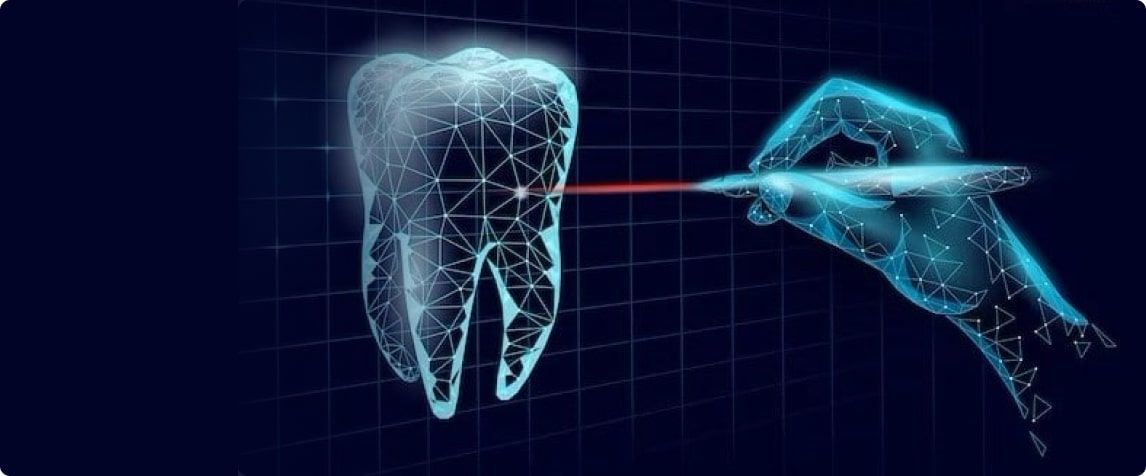
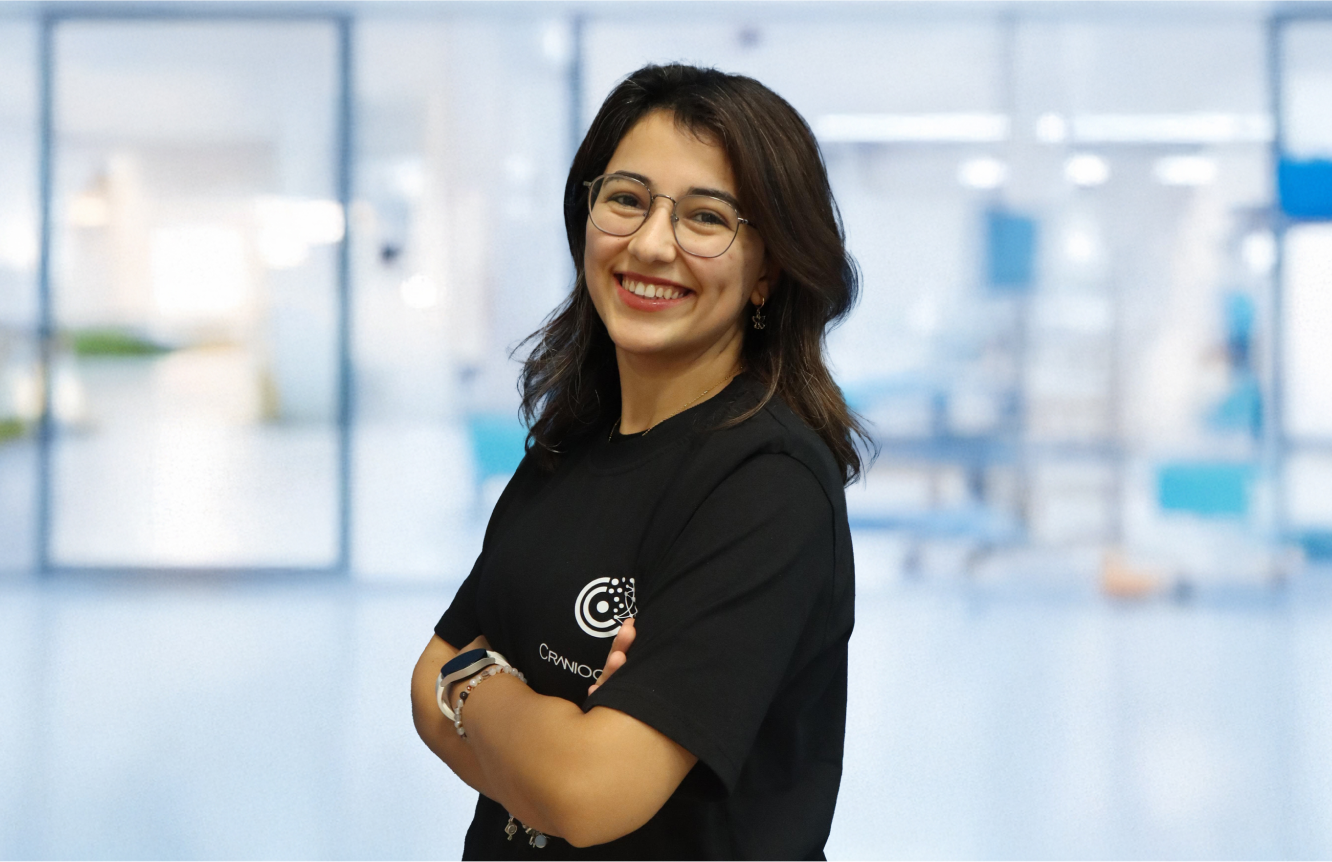

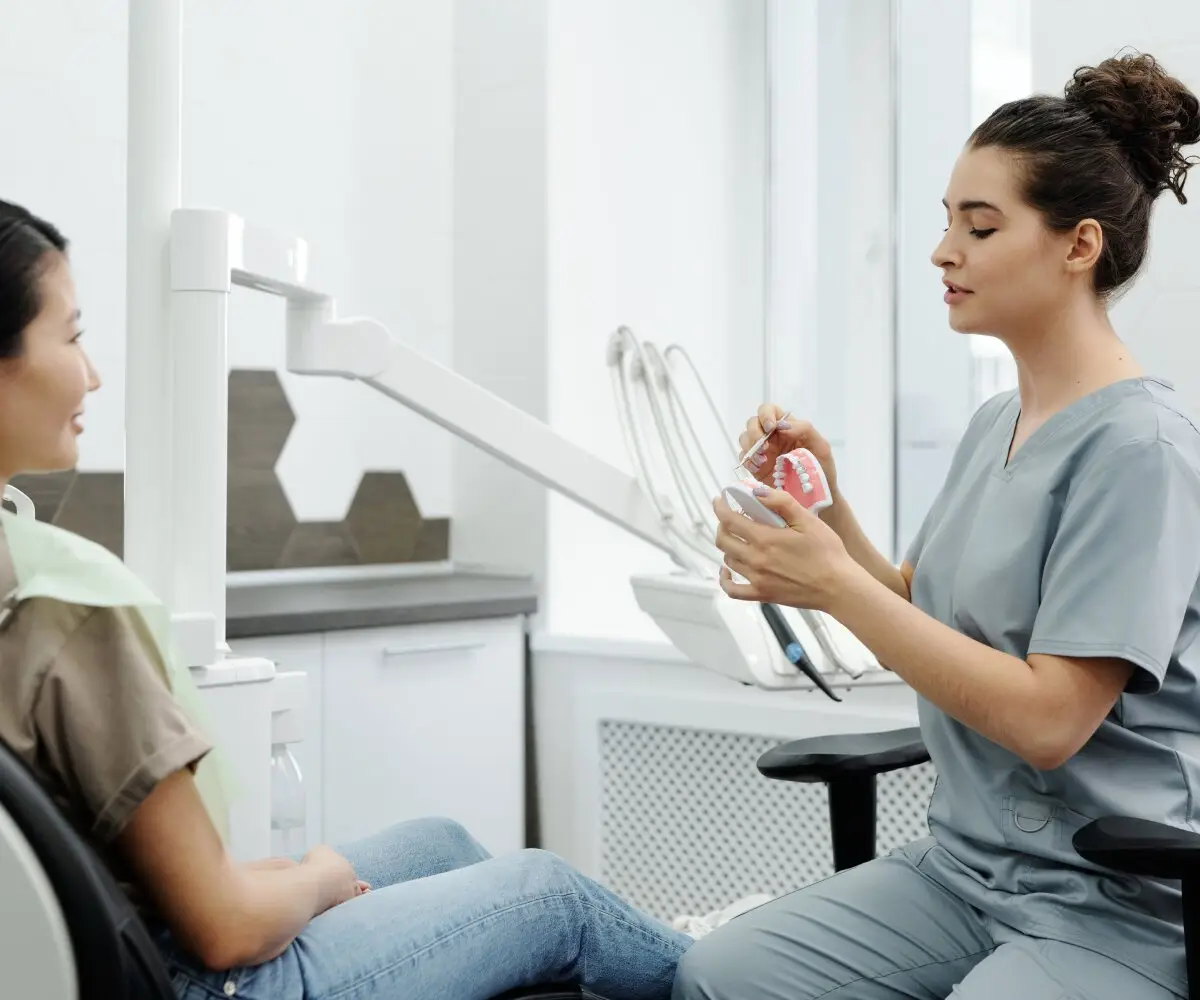
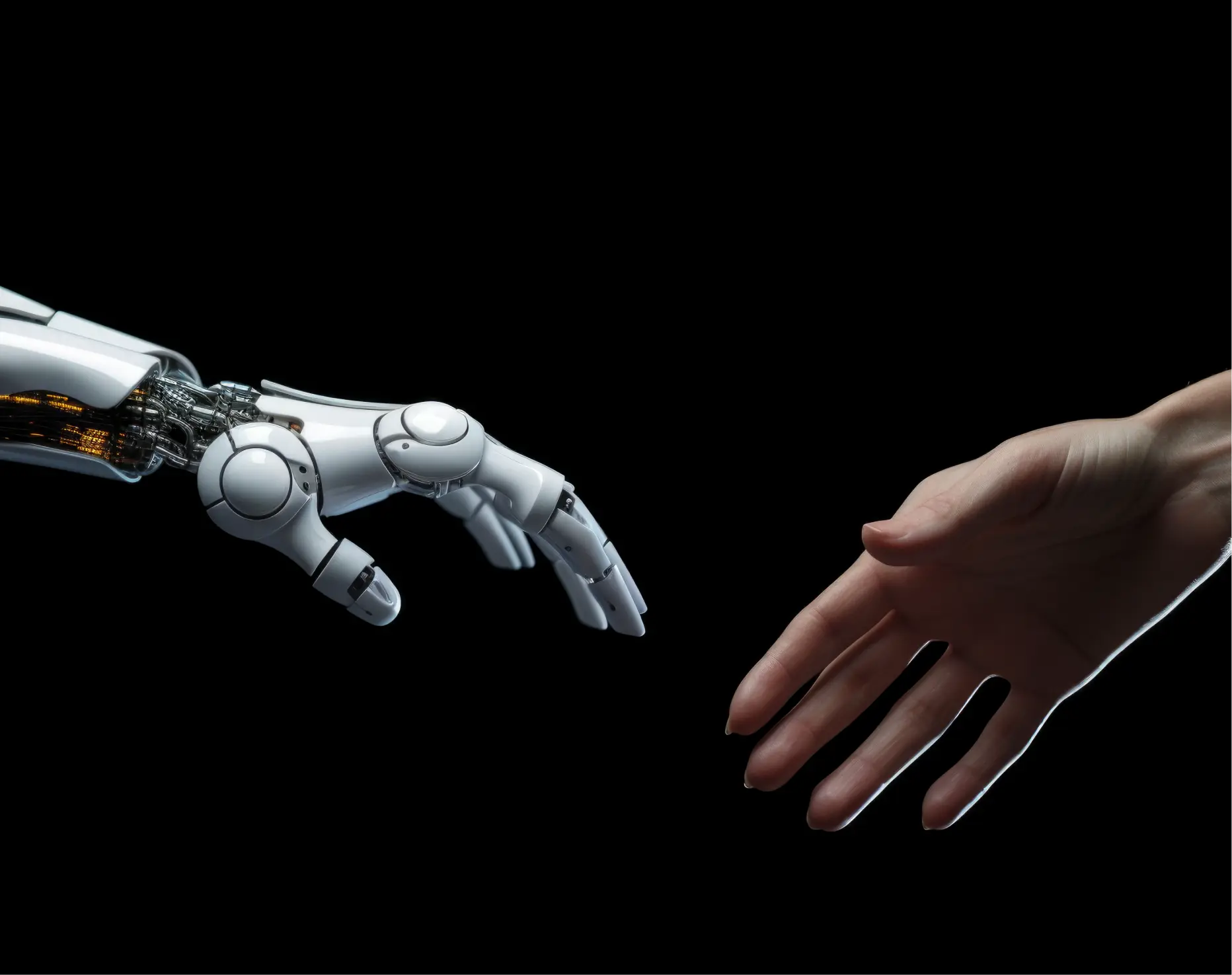
 Contact Us
Contact Us

